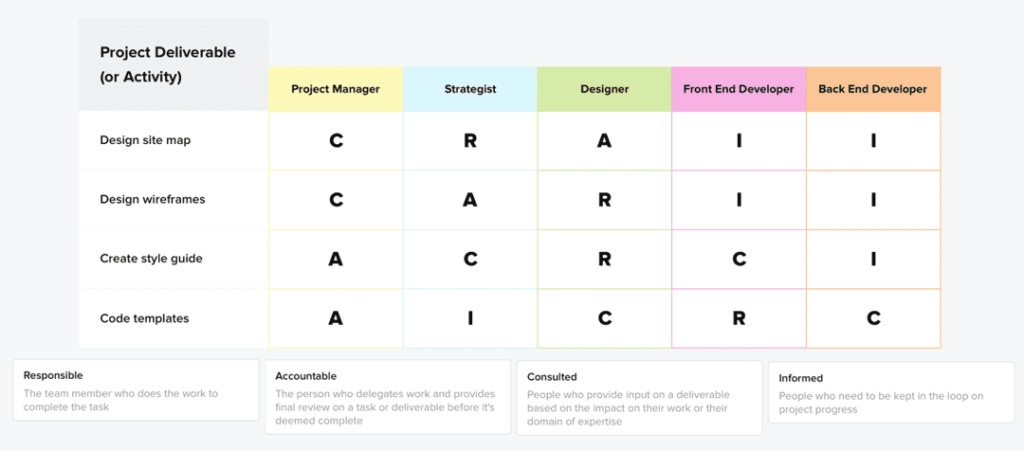Tools for Aligning Agile Team Needs and Expectations-EN

Patricia Parreira
- Business Agility
- Article
Tabla de contenidos
The great majority of people live in communities. In our private lives, we coexist with our family, our friends, and our acquaintances. But we also coexist with many other people in our professional environment, collaborating with our teammates to achieve goals and finish tasks.
Even though we are social beings, and luckily, we have emotional intelligence, it is inevitable that occasionally there are disagreements and conflicts among us. To avoid this, we are taught that you must treat others how you want to be treated. This Golden Rule helps create a healthy coexistence, but there is another variation (also known as the Platinum Rule) that I think empathizes even more with the needs of each individual:
“Treat others how they would like to be treated.”
No two people are the same. Even if most of us have the same moral standards and we understand respect in similar ways, the truth is that our different personalities cause us to have different needs and habits.
Consider the behavior of an extrovert versus that of an introvert. While an extrovert recharges every time they have social interaction, an introvert becomes drained when they have been around people for too long. At a party, for example, the extrovert will still want to talk with others even after the party has ended; the introvert, on the other hand, after three or four hours of socializing, will feel exhausted and ready for some alone time.
This is very similar in our professional life. Under the same circumstances, there will be co-workers who will feel comfortable in a certain environment, and some others won’t. There are people that need absolute silence to focus, while others need to walk around the floor for half an hour to stretch and unwind.
To create an environment where all of us can be the best version of ourselves, it is important to be explicit about our needs and make requests – not only on an individual level, but also as a team. As you know, agile teams may have their own internal agreements, like the Definition of Done or grabbing a beer on Thursdays after work. This helps create an expected level of comfort with the team and to align expectations.
In this article, we will explore some tools you can use to make team members’ needs and expectations explicit.
On an Individual Level
Washing Instructions
Pia-Maria Thorén suggests this tool, “Washing Instructions”, in her Agile People course. By emulating laundry labels (Machine wash cold, do not tumble dry, etc.), people can make a list of things they need and ask others for their “instructions on how I would like to be treated”. For example:
- Please do not distract me if I am in a productive state.
- Count on me if you need help.
- I don’t feel comfortable being the center of attention in meetings.
- I like to listen to music when I work.
- I always need a mid-morning coffee.
Using this tool isn’t only a way of understanding our colleagues, their needs, and their habits, but it’s also a great way to bond and get to know them a little better.
On a Team Level
Delegation Board
In teams formed by people with different roles, it’s useful to clarify the action range of each role. Even though each role has its own responsibilities, some tasks can be delegated to a greater or lesser extent to others. There are several benefits to delegating:
- shared responsibility increases people’s commitment to the project
- more time is dedicated to things that add more value
- horizontal structures are promoted

Delegation Boards and Delegation Poker are awesome tools from Management 3.0 that help guide teams to share their expectations and needs for support so they can reach agreements on responsibility and involvement regarding day-to-day tasks. My fellow instructor, Miquel, shares more about both these tools in his A Guide for Decision Making Using Delegation Poker and Boards article.
RACI Matrix
Another way of agreeing and expressing levels of responsibility is through the RACI matrix. Its acronyms correspond to R = Responsible, A = Accountable, C = Consulted and I = Informed.

A quick note since Responsible and Accountable can sometimes be considered very similar in definition. While the responsible is the one who performs the task, the person who is accountable is in charge of that task and its results. Generally, when these two levels of responsibility exist, it is because a task has been delegated from the accountable to the responsible.
For example: in a Scrum team, the Product Owner is accountable that the Product Backlog items are clear and understood. However, he can do himself or, for whatever reason, choose to delegate this activity to the Development Team. In the second case they would be responsible for carrying out the task (if so agreed) but the Product Owner is still accountable for it.
Alliance
Team alliances are agreements on good practices that help create a better coexistence, efficiency, or value orientation. The team proposes, debates, and agrees on the behaviors that will form its alliance, and each of its members commits to comply with them. A team alliance could be something like this:
- The meetings that we call will have a corresponding agenda.
- The facilitator will document the conclusions from the meetings.
- Every Friday, we will go out to eat lunch together.
- At the end of each Daily Scrum, we will review the burndown chart.
Niko Niko Calendar
Creating a Niko Niko Calendar is a great way to get the team engaged and talking about their challenges, not just general status updates. Sometimes the rich conversation derived from this practice will help identify trends in the team’s attitude and tone. It can also help create empathy among team members and lead to continuous improvement over time.

Outwards
Team Canvas
The Team Canvas is a tool that is used to align team members regarding the purpose of the project, the goals set, the roles that make up the team and their responsibilities, values and team norms, strengths, risks, etc. Although it is crucial that team members are clear about these aspects, it is very useful to make them visible to the rest of the organization, in environments where dependencies on other teams exists.

When the rest of the organization knows this information, they empathize with another team’s processes and values, understand how it can contribute to their team, and learn what behaviors to adopt when they interact with other teams.
Evolution of Aligning Agile Teams
All these tools are useful to make needs and goals explicit, to align expectations, and to be transparent with others. In addition, creating these agreements helps you reach maturity as a team. However, it is important to note that these agreements are not permanent: as the team evolves, learns, and matures, these agreements can (and should) be reviewed and adjusted. If not, they may become obsolete and lose their function.
I hope this helps,
Patricia

Are your team’s needs and expectations aligned?
Our Course Based Improvement solution was designed for team-level training and is perfect for aligning your team to ensure communication, collaboration, and overall effectiveness.
Sobre el autor
